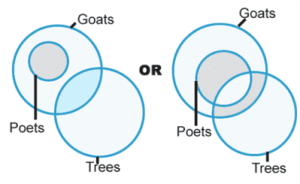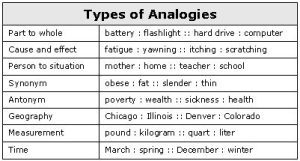Divisibility Rules are important to save time in the CAT exam. Yes, you read it right. Divisibility rules that we had learnt in middle school are critical to prepare for an MBA entrance exam.
How do they save us time?
Firstly, they make your calculations faster in the DILR (Data Interpretation and Logical Reasoning). Secondly, in the Quantitative Aptitude Section, Divisibility Rules are used to solve many questions based on Number Theory.
So, there. That’s why you should learn Divisibility Rules.
Additionally, you can discover our latest approaches for CAT 2024 and explore the My Captain Program through a demo class.
Divisibility Rules: 1 to 20
Rule for 1
It is a mathematical fact that 1 is a factor for every number that could ever exist. So, 1 is divisible by every number.
Rule for 2
For a number to be divisible by 2, it should have an even number in its ones place.
Example:
32 is divisible by 2 because it has 2 in its ones place.
78 is divisible by 2 because it has 8 in its ones place.
Rule for 3
The sum of the digits must be a multiple of 3. Then, It will be divisible by 3.
Example:
71 is not divisible by three, since the sum of its digits is 8. 8 is not a multiple of 3. Therefore, 71 is not divisible by 3.
51 is divisible by three, since the sum of its digits is 6. 6 is a multiple of 3. Therefore, 51 is divisible by 3.
Rule for 4
There are three ways to find if a number is divisible by 4.
(i) The last two digits of the number must be a multiple of 4
(ii) The ones place must have 0, 4, or 8 if the tens digit is even. However, If the tens digit is odd, the ones digit must have 2 or 6.
(iii) Double the tens digit of the number and add the ones digit to the product. Then, check if the resultant number is a multiple of 4 or not.
Tip: Use the third method for numbers with more 4-digits.
Example:
832 is divisible by 4. Can you say why?
Rule for 5
The last digits of the number must be 0 or 5. Then, the number is divisible by 5.
Example:
90 is divisible by 5 because the last digit is 0.
Rule for 6
The number must be divisible by 2 and 3.
Example:
1458 is divisible by 6. It has an even number in its ones place. It is divisible by 3 because the sum of the digits of the number is a multiple of 3.
Rule for 7
If a number is divisible by 7, then on subtracting twice the digit in ones place from the rest of the number must either result in a multiple of 7 or 0.
Example:
749 is divisible by 7 because 74 – 18 = 56. Thus, 56 is a multiple of 7. It is divisible by 7.
Rule for 8
There are multiple rules to verify whether a number is divisible by 8. Here, we’ll be discussing the two given below.
(i) Separate the last digit from the rest of the number, then, double the rest of the number. Now, add the last digit to it. The resultant must be a multiple of 8.
(ii) The last three digits of the number must be divisible by 8.
Tip: For numbers with more than 3-digits, first use the second method and then, apply the first method to those last three digits.
Example:
34,152
Consider the last three digits: 152
Now, separate the last digit from the rest of the number.
Double the remaining number: 15 × 2 = 30
Then, add the last digit to the product: 30 + 2 = 32;
We know that 32 is a multiple of 8 (8 × 4 = 32)
Therefore, 34,152 is divisible by 8
Rule for 9
The sum of all the digits of the number must be a multiple of 9. Then, it will be divisible by 9.
Example:
2889: 2 + 8 + 8 + 9 = 27
We know that 9 × 3 = 27
Therefore, 2889 is divisible by 9
Rule for 10
The digit in the ones place must be 0 for the given number to be divisible by 10.
Example:
88800 is divisible by 10 because it has 0 in its ones place.
Rule for 11
The difference between the sum of the digits in the even places and the sum of the digits in the odd places must be a multiple of 11 or 0.
Example:
918,082
Sum of the digits in the odd places: 2 + 0 + 1 = 3
Sum of the digits in the even places: 8 + 8 + 9 = 25
The difference between the two sets of sums: 25 – 3 = 22
We know that, 11 × 2 = 22
Therefore, 918,082 is divisible by 11.
Rule for 12
Example:
972:
9 + 7 + 2 = 18
It is divisible by 3
(7 × 2) + 2 = 16
The resultant is a multiple of 4. So, it is divisible by 4.
Therefore, 972 is divisible by 12 because the number is divisible by 3 and 4.
Rule for 13
On adding four times the digit in the units place to the rest, the resultant must be a multiple of 13.
Example:
923 :
92 + (3 × 4) = 104
⇒ 10 + (4 × 4) = 26
26 is a multiple of 13 because 13 × 2 = 26.
Therefore, 923 is divisible by 13.
Rule for 14
There are two ways to verify the divisibility of a number by 14.
(i) The number must be divisible by 7 and 2.
(ii) On adding the last two digits to twice the rest of the number, the resultant obtained must be a multiple of 14.
Example:
224:
(2 × 2) + 24 = 28
We know that, 14 × 2 = 28
So, the given number is divisible by 14.
Rule for 15
The given number must be divisible by 3 and 5
Example:
405
4 + 0 + 5 = 9
Hence, the given number is divisible by 3
The last digit of the number is 5. So, it is divisible by 5.
Therefore, the given number is divisible by 15 as it is divisible by 3 and 5.
Rule for 16
For a number to be divisible by 16, the resultant obtained when adding the last two digits to four times the rest of the number must be a multiple of 16.
Example:
1184
(11 × 4) + 84 = 44 + 84
⇒ 128
(1 × 4) + 28 = 4 + 28
⇒ 32
As the product of 16 and 2 is equal to 32, the given number is divisible by 16.
Rule for 17
The difference between the last two digits and two times the remaining number must be a multiple of 17 to be divisible by 17.
Example:
4,675
(46 × 2) – 75 = 17
We know that 17 is a multiple of itself. Therefore, the given number is divisible by 17.
Rule for 18
The number must be divisible by 9 and 2. Then, it is divisible by 18
Example:
342
The last digit is even. So, it is divisible by 2.
3 + 4 + 2 = 9
As 9 is a multiple of itself, the number is divisible by 9.
Therefore, the given number is divisible by 18.
Rule for 19
On addition of twice the last digits to the rest of the number, the resultant must be a multiple of 19.
Example:
437:
43 + (7 × 2) = 57
So, we know that thrice 19 is 57. Therefore, the number is divisible by 19.
Rule for 20
The given number must be divisible by 10 or have 0 in its unit place, and it should have an even number in the tens place for the number to be divisible by 20.
Example:
460
The units place has 0. So, it is divisible by 10.
The number has an even number in its tens place, that is, 6. So, it satisfies both the conditions of divisibility by 20.
Therefore, the given number is divisible by 20.
I hope you find this useful!
If you have any doubts, just drop them in the comments section below or email our CAT coaching Kolkata at bellingthecat2@gmail.com. You can also contact us at BellCAT to learn more about us.
Happy learning!
Author:
Anand Roy, known as the Verbal Magician, helps MBA candidates improve their verbal skills, ace interviews, and stay motivated through engaging lessons rich with real-world examples. Leveraging his extensive mentoring experience and a PGDM from IMI, he steers students towards their goals.
- Name: bellCAT CAT Coaching Center in Kolkata
- Address: First Floor, 161, 7 C, Rash Behari Ave, Gariahat, Kolkata, West Bengal 700019
- Phone: 062890 79021
- Website: https://bellcat.in/






